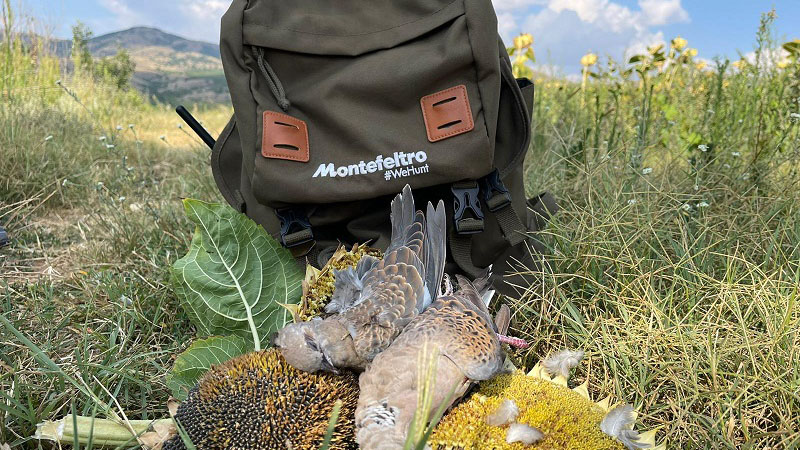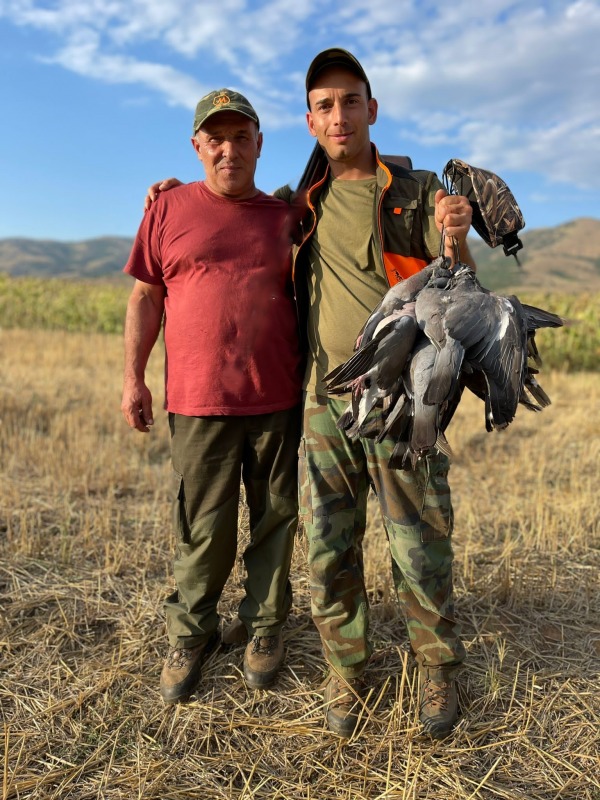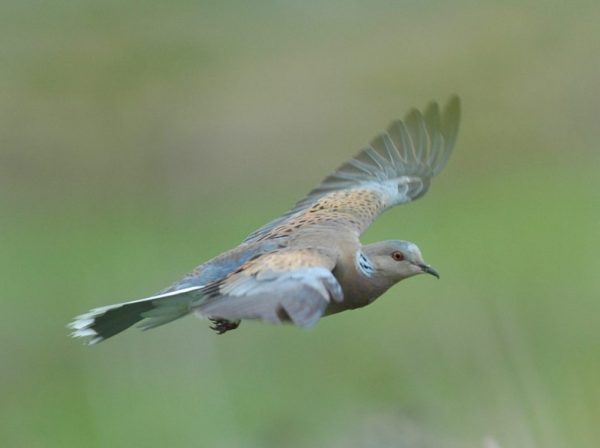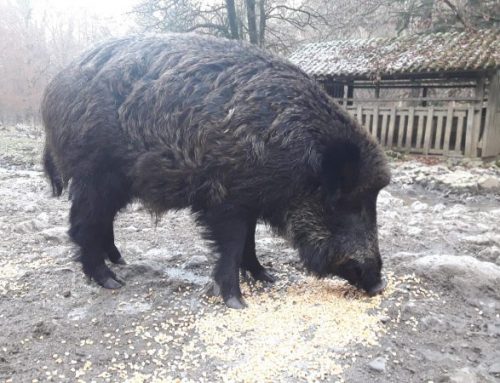The travel diary of Alessandro.
When Trust Is Reborn: My Hunting Trip in Macedonia with Montefeltro
“Three unforgettable days of doves, pigeons, and the rediscovery of a dream”
Sometimes, past experiences leave scars. And not all of them are good ones. After a few disappointing hunting trips with other agencies, every time I considered booking a new adventure abroad, hesitation would creep in. Doubts, second thoughts, the fear that something might go wrong—it all weighed heavily on the excitement.
But then, driven by a deep longing to reconnect with real, honest hunting, I decided to give it another chance. I didn’t expect much at first, I’ll admit that. But that decision changed everything.
From the very first contact with Montefeltro, I sensed something different. There was a rare attention to detail, a reassuring professionalism that made me feel not just like a customer, but like a hunter being truly understood. Every aspect of the trip was carefully planned: from the choice of the dates to the destination, everything tailored to my needs and my hunting dreams.
We chose together what would be the best time for the trip, and so it was. My first experience with Montefeltro began on August 17th, 2023.
When I landed at Skopje Airport, someone was already there waiting for me, ready to take me south to Bitola, where Montefeltro has an exclusive hunting reserve. The drive through the Macedonian countryside already stirred something in me—gentle hills rolling under golden skies, a land that seemed untouched by time, carved by wind and tradition.
The hotel welcomed me warmly. Clean, comfortable, with delicious local food—it felt like home from the very first evening. But my heart was already racing in anticipation of what was to come: the first morning of hunting doves and pigeons in a place I had only imagined.
And what a morning it was.
As soon as we arrived on the hunting grounds, everything Angelo had told me before departure came to life. The flights were dense and consistent, the game abundant and agile. The dove and pigeon hunting in Macedonia was not just good—it was spectacular. My expectations weren’t just met—they were exceeded.
For three incredible days, I experienced something I had almost forgotten: the pure joy of hunting done right. The kind where nature, man, and tradition meet in perfect harmony. The birds came in waves, the excitement was constant, and the results were beyond satisfying.
By my side the entire time was a local guide—skilled, passionate, and deeply knowledgeable of both the land and the art of hunting. He wasn’t just there to help; he was there to share, to laugh with me, to ensure I truly experienced the soul of Macedonian hunting. His presence turned the trip from a mere hunt into a shared story—one written under vast skies, across open fields, and into the beating heart of a culture that lives and breathes the wild.
What can I say? This experience gave me so much more than I had hoped for. It gave me back my trust. It reminded me of the magic of well-organized hunting trips, of the power of human connection, and of the importance of working with people who genuinely care.
It was a trip full of memories I’ll carry forever. And as I write this, my mind is already in the mountains again—planning my next adventure with Montefeltro, chasing partridges and rock partridges across rugged Macedonian terrain.
Because real hunting, the kind that moves you, starts when you let go of hesitation and rediscover the thrill of dawn, the pulse of the earth, and the silent language between man and nature.
Alessandro
Turtledove and wood pidgeons hunting in Bitola
Turtledove and wood pigeon hunting is a popular outdoor activity in Macedonia, particularly in regions near Bitola. Bitola, located in the southwestern part of the country, offers diverse landscapes that are attractive to both migratory and resident bird species, including turtledoves and wood pidgeons.
During the hunting season, which typically occurs in the late summer and early autumn months, hunters flock to the countryside around Bitola to pursue these game birds. The hunting season is carefully regulated by Macedonian authorities to ensure the sustainability of bird populations and to protect their natural habitats.
Hunting grounds near Bitola often consist of farmland, forests, and open fields, providing ideal habitats for turtledoves and wood pigeons. Many hunting enthusiasts appreciate the challenge of stalking these birds in their natural environment and the opportunity to enjoy the picturesque scenery of the Macedonian countryside.
Hunting turtledoves and wood pigeons requires patience, skill, and often the use of decoys and calls to attract the birds within shooting range. Hunters typically employ shotguns loaded with small pellets to effectively take down these fast-flying birds.
In addition to the thrill of the hunt, many hunters in the Bitola area value the social aspect of the experience, often hunting in groups and sharing stories and camaraderie during breaks in the action.
Overall, turtledove and wood pigeon hunting near Bitola offers outdoor enthusiasts a rewarding and immersive experience, combining the excitement of the chase with the natural beauty of the Macedonian landscape. However, it’s essential for hunters to adhere to local hunting regulations and conservation guidelines to ensure the continued health of bird populations and their habitats.
The Hunt
There is something profoundly poetic in the way the sky begins to stir at dawn—when silence still hangs over the fields, and the first golden threads of light stretch across the horizon. In that suspended moment, just before the world awakens, begins one of nature’s most ancient and elegant rituals: the flight of the turtle-doves and wood pigeons.
Their migratory journey, a dance as old as time, commences with remarkable precision around 7:30 AM. Driven by instinct and the call of survival, these graceful travelers rise from their resting places and cut through the morning air with determined purpose, seeking nourishment in the sunflower fields, whose golden heads tilt like silent sentinels toward the rising sun.
This rhythm, this timeless choreography, demands that the hunter—respectful observer and participant—arrive at his post with reverence and readiness. By 7:00 AM, he must already be hidden, still, attuned to the heartbeat of the land. He waits not as a predator, but as one who has learned to listen to the earth and read its secrets in the wind.
Such precision in pursuit does not come by chance. Days before the hunt, experienced local guides, guardians of their territory, walk the land with the eye of a naturalist and the soul of a poet. They study the skies, the traces left in the dust, the routes traveled by wings invisible to the untrained eye. Their careful scouting is an act of devotion, ensuring that each hunter finds himself not just in the right place—but in harmony with the unfolding spectacle.
With that knowledge, they select the most promising covers: shelters of natural camouflage where man can merge with the landscape. These are not just spots, but carefully chosen sanctuaries of silence and patience, positioned to intercept the birds’ silent flight paths. Here, the hunter waits—not with haste, but with heart—honoring the moment, breathing with the rhythm of the morning.
Sometimes, however, nature decides otherwise. The birds change their path. The winds shift. The silence lingers longer than expected. In those moments, the hunt transforms, adapts, evolves. The pursuit moves to the watering holes—those secret oases where life gathers: a river bend shaded by willows, the mirror-still surface of a hidden swamp, or a low-lying overflow glistening under the midday sun.
And here, too, the guides know where to look. For the birds need more than food—they need rest, water, vantage. They seek perches, those quiet stations carved into tree limbs, abandoned trunks, or high wires suspended across the land. From here, the hunter must watch and wait, respectful of the rhythm, humbled by the elegance of flight, and aware that every movement is a gift from the wild.
Because in the end, the hunt is not just about the taking—it is about the being: being present, being part of something larger than oneself, being reminded that we too belong to the great cycles of life. And when the hunt concludes, whether triumphant or contemplative, it leaves in its wake not only the scent of gunpowder and feathers in the wind, but the memory of a morning where time stood still, and man, for a few sacred hours, walked hand in hand with nature.
The employment of dogs stands as common protocol, underscoring the importance of a disciplined and responsive canine companion. These trained dogs execute commands with precision—stay, lay down, fetch—exhibiting a remarkable ability to track and retrieve downed birds swiftly and accurately. A skilled dog will return to the hunter, proudly delivering the prize with unwavering loyalty and efficiency.
In group hunts, comprising 4 to 8 hunters, comprehensive coverage of the birds’ flight corridors is paramount. This strategic positioning forces the birds to remain airborne, affording hunters multiple opportunities for successful shots. With speeds ranging from 70 to 90 km/h, anticipating the flight trajectory of the turtledove and wood pidgeon demands keen precision and quick reflexes.

Montefeltro Staff, Enrico Zaina
“A passionate hunter (and former professional cyclist) has always devoted himself to his passions. An excellent guide for your hunting trips worldwide. He will follow all the programs reserved for feather enthusiasts and accompany them during the hunting season.”









